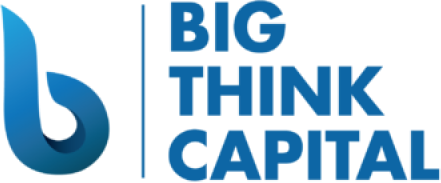Mastering the Balance: Aligning Your Small Business Funding Strategy with The Federal Interest Rate Hike
Estimated reading time: 5 minutes
Key Takeaways:
- Assess your funding needs carefully before seeking financing.
- Diversify your funding sources to optimize your options.
- Stay informed about interest rates and economic trends.
Table of Contents:
- The Current Landscape of Interest Rates
- How Interest Rate Hikes Affect Small Business Financing
- Strategies for Navigating the Current Funding Environment
- Making Informed Decisions in a High-Interest Environment
- The Role of Big Think Capital in Your Funding Strategy
- Practical Takeaways for Small Business Owners
- Conclusion
The Current Landscape of Interest Rates
Since 2022, the Federal Reserve has been on a trajectory of increasing interest rates. This has resulted in the highest rates we’ve seen in over two decades. The target federal funds rate was recently maintained in a range of 5.25% to 5.50% as of early 2025. These adjustments are designed to curb inflation that has risen significantly, especially in the wake of the COVID-19 pandemic and ongoing supply chain disruptions (source).
For small businesses, this environment presents both challenges and opportunities. Understanding these dynamics allows business owners to tailor their funding strategies to not only survive but thrive.
How Interest Rate Hikes Affect Small Business Financing
Interest rates play a critical role in determining the overall cost of financing for small businesses. Here are some ways that recent rate changes affect small business financing options:
- Higher Borrowing Costs: As rates rise, so do the costs associated with loans. For businesses looking to secure capital through traditional bank financing, this could result in significantly higher monthly payments.
- Impact on SBA Loans: While SBA loans tend to offer favorable terms, they are also affected by rising rates. Variations in the prime rate influence SBA loan interest rates, meaning upcoming borrowers might encounter higher repayment amounts.
- Alternative Financing Trends: With traditional funding becoming more expensive, many small businesses are turning to alternative lending sources, such as working capital advances and merchant cash advances (MCA). While these options offer quicker access to capital, they often come with higher costs.
Strategies for Navigating the Current Funding Environment
Small business owners must adapt to the current funding environment. Here are practical strategies to consider:
1. Evaluate Your Financing Needs
Before seeking funding, clearly define what your business needs. Are you looking for operational capital, expansion funds, or to invest in new equipment? Understanding your specific needs helps in identifying the most suitable financing options.
Considerations:
- Short-term vs. long-term needs
- Projected cash flow and revenue
- Seasonal fluctuations in business
2. Explore Multiple Financing Options
Don’t limit your search to one type of financing. Explore various options such as:
- Working capital advances: Ideal for businesses needing quick access to funds without lengthy approval processes.
- SBA loans: A solid option for businesses with excellent credit, despite potentially higher rates.
- Equipment financing: Specific for purchasing equipment, offering the potential for flexibility as the equipment itself can serve as collateral.
- Merchant cash advances: Useful for businesses with high credit card sales, allowing them to access funds quickly.
3. Monitor Your Financial Health
Maintaining a clear view of your financial health is critical in a fluctuating interest rate environment. Regularly review your financial statements, update projections, and assess cash flow to ensure your business remains viable.
Key Metrics to Monitor:
- Debt-to-income ratio
- Credit score
- Cash flow forecasts
Making Informed Decisions in a High-Interest Environment
In this evolving landscape, knowledge is power. As you explore your financing options, make sure to:
- Understand the Terms: Reading and comprehending loan terms is vital. Pay special attention to interest rates, repayment terms, and any associated fees.
- Negotiate When Possible: There are often terms you can negotiate with lenders. Discussing options with multiple lenders may yield more favorable rates and terms.
- Stay Updated on Economic Trends: Follow Federal Reserve announcements and economic indicators to anticipate how additional interest rate hikes might impact your business.
The Role of Big Think Capital in Your Funding Strategy
At Big Think Capital, we understand that every business is unique, which is why we offer a diverse range of funding options tailored to your specific needs. Our team of funding experts is dedicated to helping small business owners navigate the complexities of the lending landscape amidst changing interest rates.
Our services include:
- Access to various financing products, from traditional loans to alternative lending solutions.
- Personalized consultations to assess your specific funding needs and determine the best options available.
- Support throughout the application process to ensure timely access to capital.
Practical Takeaways for Small Business Owners
In summary, here are three key takeaways for business owners navigating the current high-interest environment:
- Assess Your Needs: Understand exactly what type of funding is necessary and how much capital is required to meet your goals.
- Diversify Funding Sources: Do not rely solely on one financing option. Explore various avenues to find the best fit for your business.
- Stay Informed: Keep up to date with interest rate trends and economic indicators, making adjustments to your financing strategy as needed.
Conclusion
Navigating the complexities of small business funding amid federal interest rate hikes can be challenging. However, with careful planning and the right strategies, you can continue to secure the necessary capital to help your business thrive. At Big Think Capital, we are committed to partnering with you to identify the right funding solutions that align with your needs in this ever-changing environment.
If you’re ready to explore your financing options, visit us at bigthinkcapital.com or contact one of our funding experts today. Together, we can master the balance between your business aspirations and the realities of the current funding landscape.
Frequently Asked Questions
Q: How do rising interest rates affect small business loans?
A: Rising interest rates increase the cost of loans, leading to higher monthly payments for borrowers.
A: Rising interest rates increase the cost of loans, leading to higher monthly payments for borrowers.
Q: What are the best financing options for small businesses in a high-interest rate environment?
A: Small businesses should consider a mix of financing options, including SBA loans, working capital advances, and equipment financing.
A: Small businesses should consider a mix of financing options, including SBA loans, working capital advances, and equipment financing.
Q: How can I keep up with interest rate changes?
A: Stay informed by following Federal Reserve announcements and economic indicators that impact interest rates.
A: Stay informed by following Federal Reserve announcements and economic indicators that impact interest rates.






